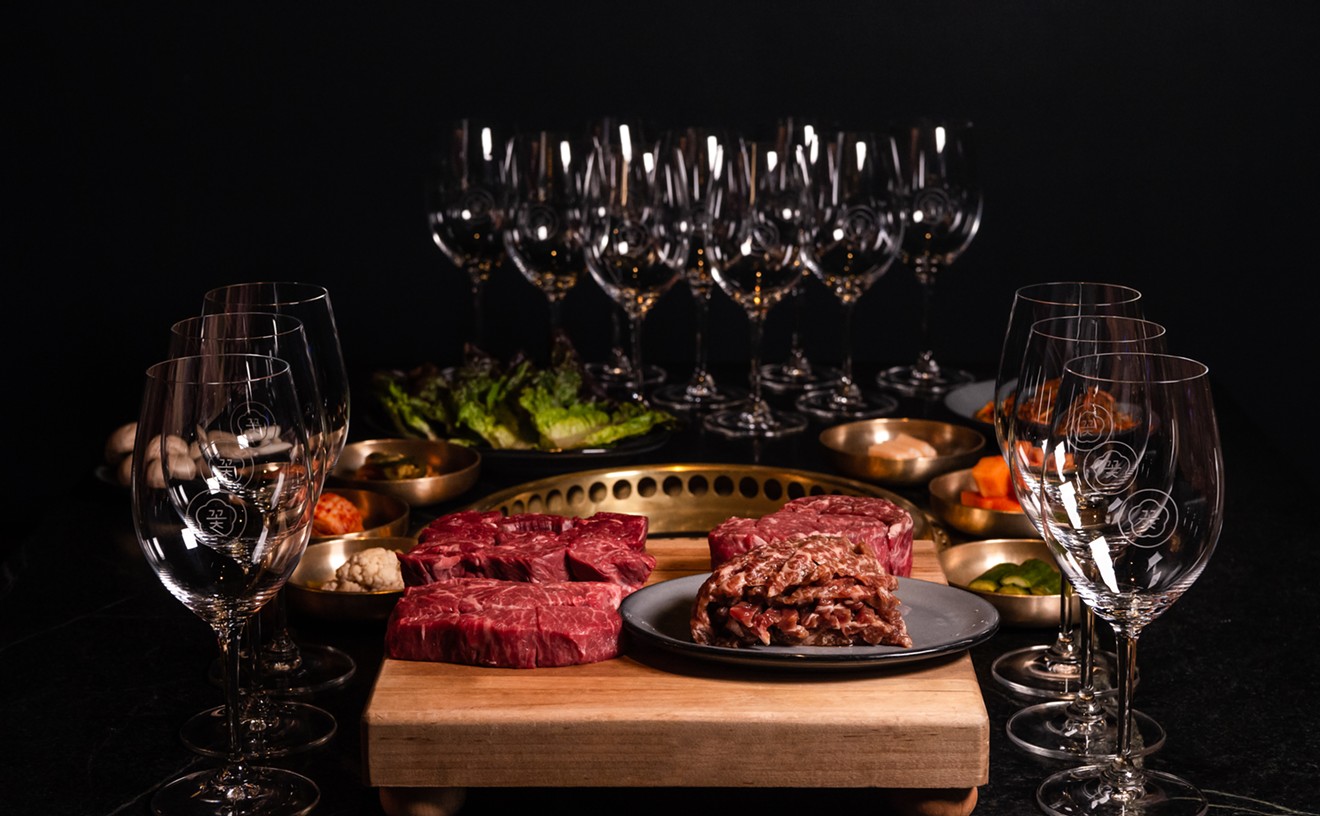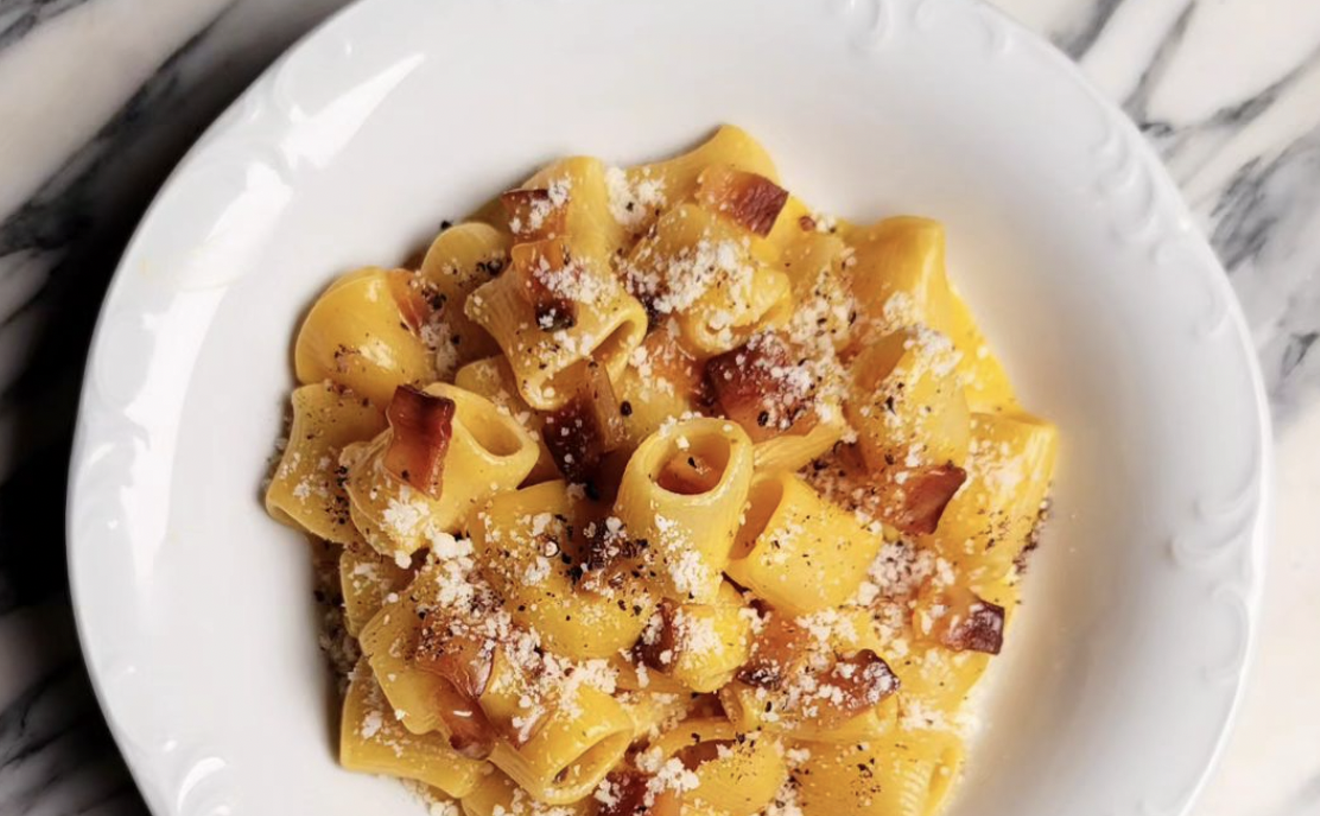Michelle Bernstein and Doug Rodriguez were recently announced as nominees for the James Beard Foundation's best chef in the south award. The first name is no surprise, for Bernstein is one of South Florida's most notable chefs. (She nabbed a nod last year but didn't win.) The recognition for Rodriguez was less anticipated only because of a collective memory lapse of sorts.
Back in 1996, Rodriguez first spearheaded Nuevo Latino fare at the original Yuca in Coral Gables and grabbed the Beard rising star award. Although a few years later he headed north for the greener plantains of New York, where he opened three restaurants, his contemporary take on foods from Central and Latin America has had a lasting influence on the regional cuisine that put South Florida on the gastronomic map. Rodriguez's unique style even landed him on Newsweek's list of "100 Americans who will influence the coming millennium." And he's won a batch of New Times best-of citations. But is his food still relevant? To find out, I recently paid some visits to OLA at Sanctuary in South Beach.
One reason OLA (Of Latin America) isn't a favorite haunt for some locals might be that over the past five years, the restaurant has seemingly changed addresses more than Osama bin Laden. The original opened on the corner of Biscayne Boulevard and 50th Street in 2003 — probably a few years too soon for the neighborhood. A shift to the Gables followed; then a branch was added at The Savoy Hotel in South Beach. Shortly afterward, the Gables venue was rechristened OLA Steak. Last year the Gables locale closed. OLA at The Savoy moved and became OLA at The Sanctuary. Got it?
The 85-seat dining area is divided into two rooms (with more tables on an outdoor veranda). The cool, contemporary décor and grooved, bronze-colored wooden walls remain from Sugo Italian restaurant's short occupation, but bursts of color (besides those provided by the comfortable tangerine banquettes) have been added via the installation of illuminated artworks.
The menu, similar to those at past OLA incarnations, is a panorama of tempting options within a concise framework of 15 small plates ($13 to $19), nine ceviches (most $16), and nine main courses ($28 to $38, excepting a $48 rack of lamb). It is pricey, but no more than other high-end establishments. On the other hand, during one of my visits, gaffes included a very long wait for the check and no offer of a wine list (a bargain-free affair of unique boutique bottles bunched with more familiar labels, many from Latin America and Spain). Service was otherwise solid, and the flow of the meals fluid.
Rodriguez's national fame makes OLA a destination spot for out-of-towners, which means the staff caters to this base. Understandable, but it becomes grating to hear the waiters robotically recommend Rodriguez's classics over and over (tables here are set quite closely). "A signature dish everyone loves is mystery meatballs," the server will say, and then quickly confide, "The mystery is that they are made with Kobe beef." (As long as the secret is being spilled, why not just call them Kobe balls?). "Oysters Rodriguez is another famous one that you might want to try...."
Well, not that a sucker is born every minute, but I ordered them both — and neither for the first time. The Swedish-size meatballs have been upgraded from oxtail to the beef-of-the-moment, and while the subtle attributes of Kobe surely get lost under mushroom sauce and a hubbub of jalapeño rings, the meatballs were as tender and tasty as any I've had in a very long while. The trio of breaded, fried oysters was the same as always, which is to say delectable atop a layer of spinach with a short white bite of horseradish, which rests upon fufu (mashed plantains speckled with bacon and onions). A dish of huacatay sauce (made from the minty Andean herb) is served on the side for those who deem six flavors to the bite insufficient.
By the time Rodriguez returned to Miami to open OLA, every two-bit cook in town had appropriated his plantain-crusted mahi-mahi (created with then-sous chef Andrew DiCataldo), as well as his style of spinning ceviche. Both are still big sellers, the latter prepared from sushi-quality raw seafood — as opposed to being "cooked" in the acid of the marinade. So salmon suffused with yuzu and clementine juices, basil, chives, Thai chilies, and wasabi caviar could be mistaken for a plate of salmon sashimi. Same goes for meaty slices of hamachi in a divine pool of pomelo-and-yellow tomato sauce, the whole thing refreshed with zesty lemon juice, jalapeño, and cilantro; this was the best thing we tried, although it might have been even better with tarragon rather than cilantro, as the menu had promised. Both are love 'em/hate 'em herbs, so the waiter should have informed diners of this switch. All in all, the ceviches are worth sampling and substantial enough to share.
What they are not, fortunately, are filling, as appetizers aptly showcase Rodriguez's predilection for pickling, peppering, smoking, and sugaring ingredients and then playing the flavors off one another like a conductor orchestrating woodwinds, strings, and horns. (Or maybe Rodriguez is the composer and the man at OLA's podium is executive chef José Luis Flores.) A pair of octopus popsicles, officially called "anticuchos," brought thick, darkly charred, sweetly glazed tentacles, each skewered on a spear of sugar cane and accompanied by a sprightly salad of watercress, Belgian endive, and assertively smoked tomatoes. Nubs of avocado tempura were also included, which didn't make much sense — but they were nonetheless satisfying. So was a threesome of soft, doughy empanadas filled with short rib meat braised in black beer. Although appetizing alone, the empanadas really take off on a strip of creamy white habañero sauce streaked with smoky orange-rosemary marmalade.
Entrées are a little less brashly inventive. Raspado de pato — featuring lean slices of the teeniest, most tender duck breast imaginable — is served with a hefty hot pot of rice stir-fried with raisins, pine nuts, edamame, and confit shreds of nonbreast meat. A potently marinated tenderloin of beef, cut and grilled churrasco-style with a thin spread of tangy, parsley-based chimichurri, is sumptuously smothered in creamy chipotle sauce plumped with pearly lumps of crab meat. There was nothing crisp about "crispy pork," but the soft, slow-cooked meat was tastefully spiked with culantro mojo.
Some combos work better than others. The main components of a deconstructed causa — seared slabs of dark-purplish tuna crusted with adobo spicing, a smooth purée of blue potatoes, and a row of green conch escabeche — were plated like stripes on the flag of a color-blind nation, probably just moments before serving. This robs the traditional Peruvian dish of its greatest virtue: the overnight melding of flavors. The acidic escabeche also overwhelmed the mild potato and fish.
I thought differently about the dessert menu's "deconstructed key lime pie" when I last tried it at The Savoy; the whole was as good as the sum of its parts — in this case key lime custard, toasted meringue, walnut tuile, and a graham-cracker-coated quenelle of vanilla ice cream. This time, though, I went with yet another Rodriguez signature, a "cigar" made with almond chocolate cake encased in semisweet chocolate mousse and rolled in cocoa and cinnamon. Looks just like a stogie, label and all, served on a plate that mimics an ashtray — along with a dab of coffee ice cream and a matchbox made of candy. Take away the clever presentation and you're left with a devilishly rich treat.
Take away the novelty and newness from Rodriguez's now not-so-Nuevo Latino fare and you are still left with a singular updating of Hispanic cuisine — which means OLA remains as relevant as any restaurant in South Florida.










